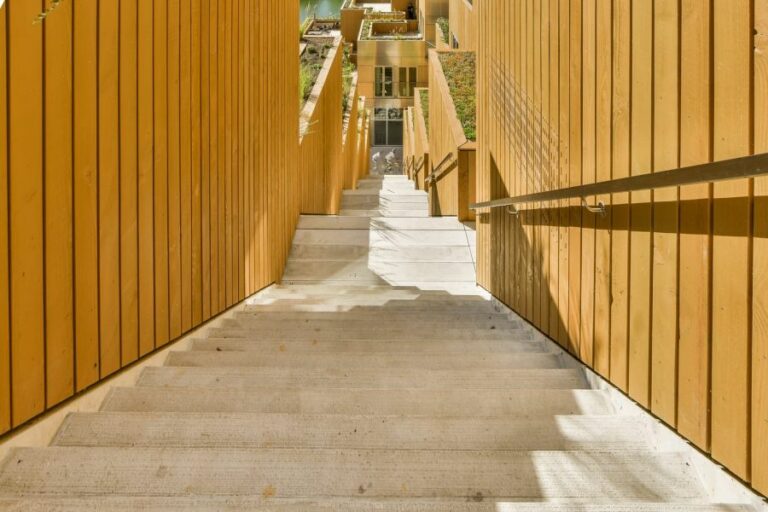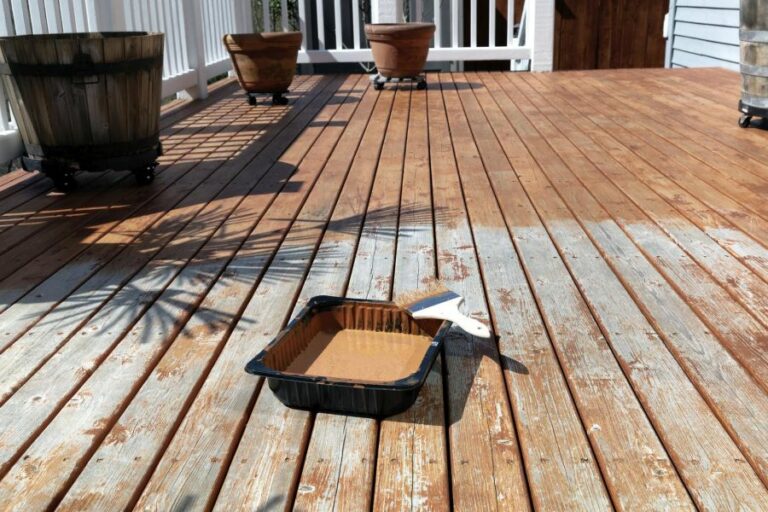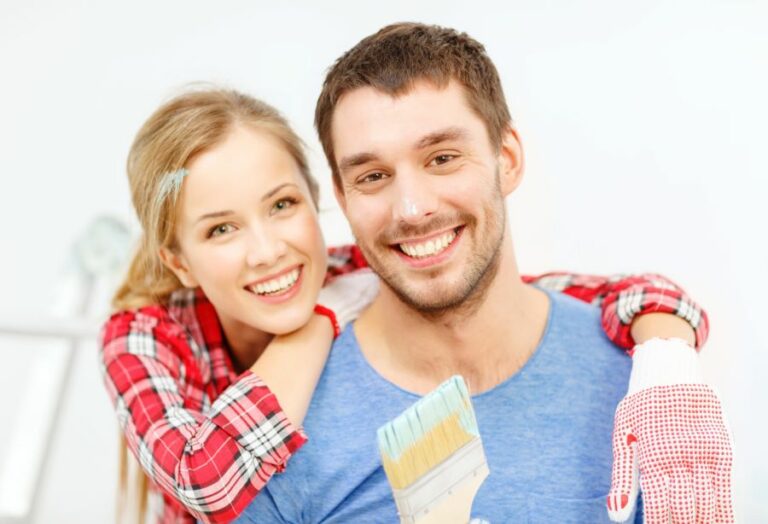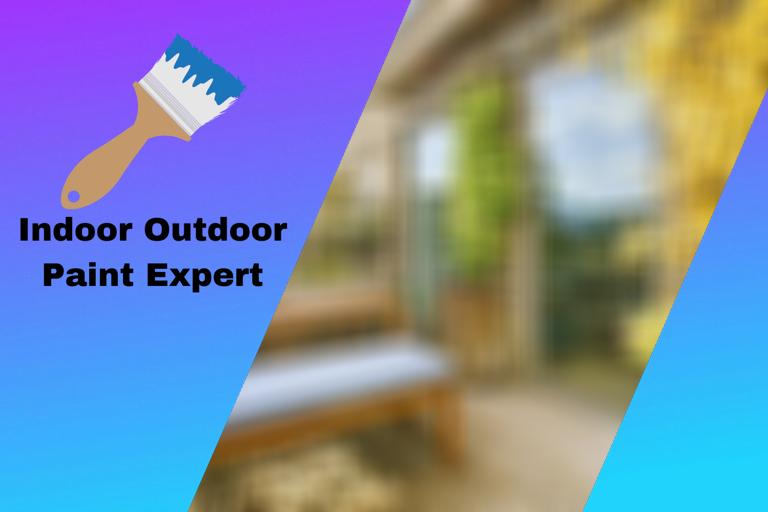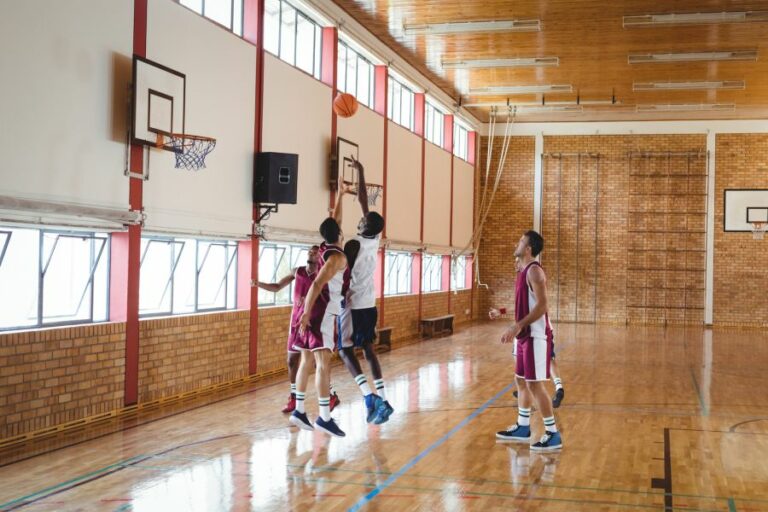Transform Your Home with the Best Exterior Paint, with Tips
Transform your home’s appearance with a stunning outdoor exterior paint job that adds charm and increases its value. Our latest blog post explores the top outdoor paint trends, essential factors to consider, and expert tips on selecting your home’s best colors and finishes.
Outdoor exterior paint:
This guide covers the different types of outdoor exterior paints (water-based and oil-based), factors to consider when choosing paint (surface material, climate, color selection, and paint finishes), and tips for a professional-looking finish (proper surface preparation, priming, quality tools, and equipment, painting technique, and applying multiple coats). Choosing the right paint is crucial for your home’s exterior’s protection, aesthetics, and longevity.

Get ready to embark on your colorful journey as we dive deeper into the world of outdoor exterior paint! Explore the best options, latest trends, and expert tips to create the perfect exterior makeover for your home. Keep reading to transform your abode!
Contents
- 1 Exterior Outdoor Paint for Professional Use
- 2 What Type of Paint is Most Suitable for Exterior Use?
- 3 What is the Most Durable and Long-Lasting Exterior Paint for Your Home?
- 4 What is the Top Exterior Paint for Withstanding Extreme Weather Conditions?
- 5 What is the Most Effective All-Purpose Exterior Paint for Various Surfaces?
Exterior Outdoor Paint for Professional Use
Every homeowner knows the importance of having a well-maintained home, and one way to ensure that is by applying a fresh coat of outdoor exterior paint. Choosing the right paint for your home’s exterior is crucial as it not only adds a layer of protection to your home but also significantly boosts your home’s curb appeal.
This comprehensive guide will walk you through the different types of outdoor exterior paints, the factors to consider when choosing them, and some tips on achieving a professional-looking finish.
• Different Types of Outdoor Exterior Paints
There are two main types of outdoor exterior paints water-based and oil-based. Each type has advantages and disadvantages, making it essential for homeowners to understand their differences before picking the perfect paint.
– Water-based Paints
Also known as latex or acrylic paints, water-based paints are popular due to their easy application and cleanup, durability, and low VOC (Volatile Organic Compounds) levels.
Pros:
- Quick-drying
- Easy cleanup with water
- Better resistance to cracking and peeling
- Excellent color retention
- Low odor and low levels of toxic emissions
Cons:
- Not ideal for surfaces previously painted with oil-based paint
- Can be less durable in high-traffic areas
– Oil-based Paints
Oil-based paints, alkyd or enamel paints, are known for their superior adhesion and glossy finish, making them ideal for surfaces prone to wear and tear.
Pros:
- Excellent adhesion to surfaces
- Glossy, durable finish
- Greater resistance to staining and abrasion
Cons:
- Longer drying time
- Requires mineral spirits or thinner for cleanup
- High VOC levels and strong odors
- More prone to yellowing over time
• Factors to Consider When Choosing Outdoor Exterior Paint
1. Surface Material
Different surface materials, such as wood, brick, aluminum siding, or stucco, require different types and finishes of outdoor exterior paint. For example, masonry surfaces like brick and stucco require good breathability to prevent trapped moisture.
At the same time, a durable and flexible paint is ideal for wood surfaces to withstand expansion and contraction.
2. Climate and Weather
Your area’s weather and climate significantly influence how well the paint will perform. In humid areas, you may want to choose a paint with mildew-resistant properties, while more UV-resistant paints are ideal for areas with intense sunlight exposure.
3. Color Selection
Choose a color that matches your preference and complements your home’s style and neighborhood aesthetic. Lighter colors reflect sunlight and help keep your home cooler, while darker colors can absorb heat and cause the paint to fade more quickly.
4. Paint Finishes
Outdoor exterior paint comes in various finishes, including flat or matte, eggshell, satin, semi-gloss, and gloss. Flat finishes are great at hiding surface imperfections but can be less durable and stain-resistant.
Glossy finishes, on the other hand, are more durable and easier to clean, but they highlight surface imperfections.
• Tips for a Professional-Looking Finish
1. Proper Surface Preparation
To ensure a long-lasting paint job, it’s crucial to prepare your home’s exterior surface by cleaning it thoroughly, repairing cracks or damage, and scraping off any loose or peeling paint.
2. Priming
Priming is essential for new, unpainted surfaces or surfaces with stains, as it helps provide better adhesion and ensures a uniform finish.
3. Quality Tools and Equipment
Invest in good-quality paintbrushes, rollers, and other necessary tools to ensure a smooth and even paint application.
4. Painting Technique
Avoid painting in direct sunlight or on windy days, as it can cause the paint to dry too quickly and result in an uneven finish. Use the correct technique for your tool; for example, paint with a brush using long, even strokes, and always keep a wet edge to prevent overlapping lines.
5. Multiple Coats
Applying two or more coats of paint enhances the color and finish and ensures better durability and protection for your home’s exterior.
• Wrapping Up
Choosing the right outdoor exterior paint for your home can make all the difference in the paint job’s protection, aesthetics, and longevity.
By understanding the types of paint available, considering the factors that influence their performance, and following the tips for a professional-looking finish, you can ensure a beautiful and long-lasting paint job for your home’s exterior.
What Type of Paint is Most Suitable for Exterior Use?
Painting the exterior of your home is an important task. The right paint can protect your home against harsh weather conditions, prevent damage to the exterior, and enhance its overall aesthetic appeal. With many options available, one may find it overwhelming to determine the best type of paint for outside their home.
I will discuss the different types of exterior paints, their benefits and drawbacks, and some insightful recommendations based on personal expertise.
• Acrylic Latex Paint
One of the most popular choices for outdoor paint is acrylic latex paint. This type of paint is particularly praised for its durability, easy application, and resistance to harsh weather conditions.
– Advantages of Acrylic Latex Paint
- Water-based: Acrylic latex paint is water-based, which makes it easy to clean up with soap and water. This property also allows the paint to dry relatively quickly, enabling homeowners to apply multiple coats in a day if needed.
- Durable: Acrylic latex paint is known for enduring sun, rain, and temperature fluctuations. Furthermore, it is relatively resistant to fading, cracking, and peeling, ensuring your home’s exterior remains vibrant for years.
- Adhesion: This type of paint adheres exceptionally well to various surfaces, allowing for a smoother application and a more consistent appearance.
- Mildew resistance: Acrylic latex paint is less prone to mildew formation than oil-based paints, requiring a mildew-resistant primer.
– Disadvantages of Acrylic Latex Paint
- Thinner consistency: Acrylic latex paint has a thinner consistency than other exterior paint types. As a result, you may need to apply multiple coats to achieve the desired opacity and coverage.
Based on personal experience, I recommend using high-quality acrylic latex paint for your home’s exterior. It offers superior durability, weather resistance, and ease of application, making it an excellent choice for homeowners seeking to maintain and enhance the appearance of their outdoor space.
• Oil-Based Paint
Oil-based paint is another option for the exterior of your home. Though not as popular as acrylic latex paint, it does offer some benefits.
– Advantages of Oil-Based Paint
- Durability: Oil-based paint can last many years with proper care and maintenance.
- Application: Due to its thicker consistency, oil-based paint is easier to apply evenly, which can lead to a more polished finish.
- Surface penetration: Oil-based paint can better penetrate and fill the pores of rougher surfaces, providing superior coverage and protection.
– Disadvantages of Oil-Based Paint
- Longer drying time: Oil-based paint dries longer than acrylic latex paint. This can prolong the overall painting process.
- Cleanup: Cleaning up after using oil-based paint can be more challenging, as it requires using solvents such as mineral spirits.
- Fading: Over time, oil-based paint is more likely to fade and appear chalky.
- Environmental impact: Oil-based paints emit volatile organic compounds (VOCs), harming the environment and the painter’s health.
As someone with experience in painting exteriors, I recommend using oil-based paint for specific tasks, such as painting older homes with existing oil-based paint or rough surfaces that may require better penetration.
However, oil-based paint should not be the go-to option for most homeowners due to its environmental drawbacks and longer drying time.
• Hybrid Paints
Some manufacturers have developed hybrid paints, also known as waterborne alkyds or alkyd-modified latex paints, to capitalize on the benefits of acrylic latex and oil-based paint.
– Advantages of Hybrid Paints
- Durability: Hybrid paints combine an oil-based paint’s durability and adhesion capabilities with the quick-drying properties of acrylic latex paint.
- Low VOC content: Unlike traditional oil-based paints, hybrid paint options often have lower VOC content, making them more environmentally friendly.
– Disadvantages of Hybrid Paints
- Limited availability: Hybrid paints are not as readily available as acrylic latex or oil-based paint options, potentially making it harder to find the right color and finish.
Having worked with hybrid paints, I recommend using them for projects requiring enhanced durability and surface adhesion but necessitating quick drying times and easy cleanup. Be sure to confirm the product specifications to ensure low VOC content.
• Conclusion
When selecting the best paint for the outside of your home, consider each type’s various advantages and disadvantages. Acrylic latex paint is generally the most popular and recommended choice due to its durability, weather resistance, and versatility.
Oil-based paint may be suitable for specific circumstances, while hybrid paints offer a combination of benefits from both types. Consult a professional and consider your home’s specific needs before deciding. Happy painting!
Type of Paint | Advantages | Disadvantages |
|---|---|---|
Acrylic/Latex Paint | Water-based, flexible, quick-drying, and durable. | May not adhere well to surfaces with multiple layers of old oil-based paint. |
Oil-based Paint | High durability, long-lasting, and better adhesion to all surfaces. | Slow drying time, more challenging to clean up, and potentially harmful VOCs. |
Enamel Paint | Very durable and resistant to harsh weather and moisture, excellent for high-traffic areas outdoors. | Can require a primer and may show brush strokes when not applied carefully. |
Elastomeric Coating | Higher build for better protection bridges minor surface cracks and is excellent for stucco and masonry surfaces. | Higher cost and may not adhere well to previously painted surfaces without proper preparation. |
What is the Most Durable and Long-Lasting Exterior Paint for Your Home?
Painting the exterior of your home or building is a significant investment. Choosing the right type of paint is essential to ensure that your investment lasts as long as possible.
We’ll explore the longest-lasting exterior paint and the factors to consider when selecting the best paint for your needs.
• Acrylic Paint: A Top Contender for Longevity
One of the longest-lasting types of exterior paint is acrylic paint. Acrylic paints are water-based and typically last longer than oil-based paints. They’re known for their durability, flexibility, and resistance to the elements.
– Advantages of Acrylic Paint
Here are some advantages of using acrylic paint for your exterior painting project:
- Durability: Acrylic paint forms a robust, flexible, and water-resistant finish that can withstand the harshest weather conditions. This durability makes acrylic paint an excellent choice for exterior surfaces exposed to sun, wind, and rain.
- Color Retention: Acrylic paint pigments are highly resistant to fading, even when exposed to direct sunlight. This quality means your exterior paint job will look fresh and vibrant for many years.
- Quick Drying Time: Acrylic paints dry relatively fast compared to other paint types, which can be advantageous when working on an exterior painting project. Faster drying times mean you can apply subsequent coats more quickly, speeding up the painting process.
- Low VOC Content: Acrylic paints contain low levels of volatile organic compounds (VOCs), chemicals that can cause unpleasant odors and contribute to air pollution. Low-VOC paint can contribute to better indoor air quality and is generally considered more environmentally friendly.
– Disadvantages of Acrylic Paint
Despite its many benefits, acrylic paint does have some drawbacks:
- Cost: Acrylic paints are generally more expensive than other types of exterior paint, although their long-lasting nature can make them a more cost-effective choice in the long run.
- Application Difficulty: Acrylic paint can dry too quickly, causing difficulty in achieving a smooth, even finish. This issue can be problematic for novice painters or those working in hot or windy conditions.
• Factors to Consider When Choosing Exterior Paint
While acrylic paint is an excellent option for many exterior painting projects, it’s essential to consider the specific needs of your situation before making a final decision. Here are some factors to keep in mind when selecting the best paint for your needs:
– Surface Material
The surface material you’re painting will play a significant role in determining the best paint type. Acrylic paint works well on various surfaces, including wood, vinyl, brick, and stucco. However, certain surfaces may require specialty paints or primers for optimal adhesion and performance.
– Weather Conditions
Consider the local weather conditions when selecting your exterior paint. If your region experiences extreme temperature fluctuations or heavy rainfall, choose a paint formulated to withstand these conditions.
– Environmental Impact
If environmental concerns are a priority for you, opt for eco-friendly paint options. Acrylic paints with low VOC content are an environmentally-conscious choice, as are paints made with natural ingredients or minimal hazardous chemicals.
– Budget
While acrylic paint tends to be more expensive upfront, its long-lasting nature might be more cost-effective than cheaper paint options over time. Consider the total cost of your exterior painting project, including paint, tools, and labor, when determining the best paint for your budget.
• Expert Tips for a Long-Lasting Paint Job
A professional and durable outcome depends on the paint you choose and your preparation and application techniques.
– Surface Preparation
Proper surface preparation is critical for a long-lasting paint job. Clean the surface thoroughly, removing all dirt, mildew, and loose or peeling paint. If necessary, use a pressure washer, wire brush, or paint scraper to ensure a clean, smooth surface for painting.
– Priming
Using a high-quality primer can significantly extend the life of your paint job. A primer helps to create a uniform surface for the paint to adhere to and reduces the risk of peeling, blistering, or other paint failures.
– Application
Correct paint application is essential for a lasting exterior paint finish. Always follow the manufacturer’s instructions when applying paint, use the recommended roller or brush size, and apply the proper number of coats.
Depending on your location and the time of year, adjusting your painting schedule may be necessary to avoid painting during high humidity, rain, or extreme temperatures.
In conclusion, acrylic paint is a popular choice for long-lasting exterior paint projects due to its durability, color retention, and resistance to the elements.
However, it’s essential to consider factors such as surface material, weather conditions, environmental impact, and budget when making your final decision. And don’t forget the importance of proper surface preparation, priming, and application techniques to ensure a long-lasting and professional-looking result.
What is the Top Exterior Paint for Withstanding Extreme Weather Conditions?
Selecting the right exterior paint is essential for ensuring the long-lasting beauty and durability of a home or commercial building. In regions that experience extreme weather conditions, such as heavy rain, intense sunlight, strong winds, and freezing temperatures, choosing high-quality, weather-resistant paint becomes even more crucial.
I will discuss the characteristics of the best exterior paint for extreme weather and provide recommendations based on user experience and expert analysis.
• Key Features of Weather-Resistant Exterior Paints
When looking for the best exterior paint for extreme weather conditions, it is crucial to consider the following features:
– Durability
The paint should withstand wear and tear caused by continuous exposure to various weather elements. High-quality exterior paints are designed to be long-lasting, providing optimal protection for 10-15 years before requiring repainting.
– Resistance to Cracking, Peeling, and Blistering
Extreme weather conditions can cause paint to crack, peel, or blister. Top-rated exterior paints have additives and resin technologies that enhance their elasticity and help them expand and contract with temperature fluctuations, preventing such damages.
– Fade Resistance
Prolonged exposure to sunlight can deteriorate pigments, causing the paint to fade and lose its vibrancy. The best exterior paints are formulated with UV-resistant pigments that maintain color even when subjected to strong sunlight for extended periods.
– Mildew and Mold Resistance
In humid and rainy environments, moisture can lead to mildew and mold growth on painted surfaces. High-quality exterior paints contain mildewcides and other additives that help inhibit the growth of these organisms, preserving the paint’s appearance and structural integrity.
– Water Resistance
The best exterior paint should be able to resist water penetration, which can cause damage to the substrate and promote the growth of mold, mildew, and rot. Water-resistant exterior paints form a protective barrier that prevents moisture from seeping into the surface.
• Top Exterior Paints for Extreme Weather Conditions
Based on expert analysis and user experience, the following exterior paints are top-rated for their ability to withstand extreme weather conditions:
1. Sherwin-Williams Duration Exterior Paint
Sherwin-Williams Duration is an acrylic latex paint with excellent durability, flexibility, and resistance to cracking, peeling, and blistering. Its advanced UV-resistant technology and high-quality pigments ensure the paint’s long-lasting color and gloss retention.
With moisture-resistant properties and built-in mildewcide, Duration is ideal for humid and wet climates.
I recommend Sherwin-Williams Duration exterior paint for those looking for a reliable, weather-resistant, and long-lasting paint option.
2. Benjamin Moore Aura Exterior Paint
Benjamin Moore’s Aura exterior paint is known for its outstanding durability, adhesion, and resistance to fading, cracking, peeling, and blistering. It utilizes the company’s proprietary Color Lock technology to provide rich, vibrant colors that withstand harsh weather conditions.
The paint also contains a built-in mildew resistance, making it suitable for damp and humid environments.
Benjamin Moore’s Aura is an excellent choice for homeowners and professionals seeking premium, long-lasting exterior paint.
3. BEHR Premium Plus Ultra Exterior Paint & Primer in One
BEHR Premium Plus Ultra is an advanced paint and primer solution that offers superior durability, fade resistance, and water repellency. Its innovative NanoGuard technology creates a protective barrier that resists moisture, dirt, and mildew growth.
The paint and primer in one formulation save time and effort during the application process while providing excellent coverage and adhesion to various surfaces.
If you’re looking for a high-quality, easy-to-use exterior paint that can withstand challenging weather conditions, BEHR Premium Plus Ultra is a solid option.
4. PPG Timeless Exterior Paint and Primer
PPG Timeless is a 100% acrylic latex paint and primer in one that delivers excellent durability, UV resistance, and moisture protection. Its unique formula features advanced resin technology and high-quality pigments, ensuring long-lasting color and protection against fading, cracking, and peeling.
The built-in primer enhances adhesion and coverage on various surfaces, making it suitable for residential and commercial applications.
PPG Timeless is a top contender for a time-saving, weather-resistant exterior paint with long-lasting performance.
• Conclusion
In conclusion, the best exterior paint for extreme weather conditions should possess excellent durability, resistance to cracking, peeling, blistering, fading, water, and mildew resistance. Sherwin-Williams Duration, Benjamin Moore Aura, BEHR Premium Plus Ultra, and PPG Timeless are all top-rated exterior paints capable of withstanding harsh weather conditions while providing optimal protection and aesthetic appeal.
Ultimately, the choice of exterior paint will depend on personal preference, budget, and specific regional conditions.
Brand | Product Name | Features |
|---|---|---|
Benjamin Moore | Aura Exterior Paint | Extreme weather resistance, excellent color retention, self-priming |
Sherwin-Williams | Duration Exterior Acrylic Coating | Performs well in extreme climates, resists fading and peeling, self-priming |
Behr | Marquee Exterior Paint & Primer | Weather protection, fade resistance, superior adhesion, stain-blocking |
Pittsburgh Paints & Stains | Revitalize Exterior Latex Paint & Primer | Durable in extreme weather, good coverage, quick drying |
Dulux | Weathershield Exterior High Gloss | Long-lasting glossy finish, weather-resistant, mold and mildew resistant |
What is the Most Effective All-Purpose Exterior Paint for Various Surfaces?
As a professional with years of experience in the industry, I’m often asked about the best all-purpose exterior paint. Choosing the right paint ensures long-lasting beauty, protection, and value for your home or commercial property.
This comprehensive guide will thoroughly understand the different types of exterior paint and their features and my recommendations for the best all-purpose exterior paints available.
• Water-Based vs. Oil-Based Paints
Before diving into specific paint recommendations, it’s important to understand the differences between water-based (also called latex or acrylic) and oil-based (also called alkyd) paints.
– Water-Based Paints
Pros:
- Faster drying time
- Easier to clean up with soap and water
- Better for the environment due to lower VOCs (volatile organic compounds)
- Greater resistance to cracking, chipping, and peeling
- Maintain their color and sheen longer
Cons:
- Less durable in extreme weather conditions
- May not adhere well to certain surfaces, such as chalky or glossy surfaces
– Oil-Based Paints
Pros:
- More durable in extreme weather conditions
- Better adhesion to difficult surfaces
- Longer open time, allowing for better leveling and fewer brush marks
- Excellent penetration and sealing properties
Cons:
- Longer drying time
- Require mineral spirits or paint thinner for cleanup
- Higher VOCs, resulting in more odor and potential health risks
- Greater tendency to yellow, crack, and peel over time
Considering these factors, water-based paints are generally recommended for most exterior applications due to their environmental friendliness and long-lasting finishes. Nevertheless, oil-based paints still have certain advantages and can be appropriate in specific situations.
• Recommended All-Purpose Exterior Paints
After evaluating numerous exterior paints on the market, I have compiled a list of my top recommendations for all-purpose exterior paints that balance durability, ease of application, and overall value.
– Sherwin-Williams Emerald Exterior Acrylic Latex Paint
This premium water-based paint offers incredible durability and resistance to mold, mildew, and UV damage. It’s self-priming and provides excellent adhesion on various surfaces, including wood, masonry, and metal.
Its high-quality formulation ensures a smooth and uniform finish with a limited lifetime warranty.
– Benjamin Moore Regal Select Exterior Paint
Another high-quality water-based paint, the Benjamin Moore Regal Select line, is known for its excellent coverage, superior adhesion, and resistance to cracking and peeling. This paint also incorporates a mildew-resistant coating and is backed by a 25-year warranty.
– Behr Premium Plus Ultra Exterior Paint & Primer in One
This affordable water-based paint provides excellent coverage and durability while incorporating primer for better adhesion and efficiency. Behr Premium Plus Ultra is formulated with a UV protective coating, making it suitable for various climates and preventing the paint from fading.
– Valspar Duramax Exterior Paint
Valspar Duramax is a popular choice among homeowners and professionals alike. It is a water-based paint with maximum weather protection. It is self-priming, mildew-resistant, and fade-resistant, ensuring a long-lasting and vibrant finish.
– PPG Timeless Exterior Paint & Primer in One
This water-based paint from PPG combines the benefits of paint and primer in a single product, offering excellent adhesion, coverage, and durability. It’s formulated with UV-protective technology and contains a mildew-resistant coating to protect your home’s exterior from harsh weather conditions.
• Tips for Choosing and Applying Exterior Paint
- Surface preparation: Properly cleaning, sanding, and priming (if necessary) the surface before the application is crucial for optimal adhesion and durability.
- Weather conditions: Avoid painting in extreme temperatures or humidity levels to ensure proper drying and curing of the paint.
- Application methods: Utilize a brush, roller, or sprayer to achieve an even coat, paying close attention to areas that may require additional coverage.
- Dual-purpose products: Consider using paints with built-in primers for more efficient application and superior adhesion.
- Color selection: Choose a light color to help reflect heat and reduce energy costs or a bold color to make your home stand out.
In conclusion, the best all-purpose exterior paint is subjective based on individual preferences and needs. However, the water-based options mentioned above are notable selections that balance durability, ease of use, and overall value.
Homeowners or professionals can achieve an aesthetically pleasing and long-lasting exterior paint job by considering these recommendations and applying proper painting techniques.

